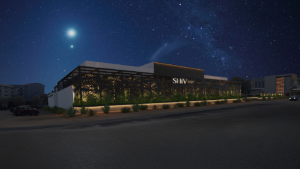The sediments of age, culture, and wildlife are sitting here layer upon layer of this multihued landscape. There is something meditative about simply experiencing this passage of time. But here’s something that the unassuming eye might miss out on during a visit to the Arizona Petrified Forest.
About the Forest
Petrified wood is the Triassic era fossils of trees supposedly fallen during a volcanic eruption and ended up washed down and waterlogged. The trees absorbed silica from the water loaded with volcanic ash which solidified the wood and replaced it with the colorful quartz we now see.
Although pure quartz crystals have no color, the minerals which contaminate the process make the crystals take on various hues, black from carbon, green or blue from cobalt or copper, pink and orange from manganese, reds, and browns from iron oxides.
What you probably don’t know is that the Triassic era is the one that followed the breaking of continents that were once great Pangaea. This means the trees are more than 200 million years old and were there alongside dinosaurs. Several hundred fossil plants and animals have been identified in this stone forest.
National Treasure and Theft
This became a national monument in 1906 and established as a national park in 1962 due to destruction brought to this place by many collectors and scavengers scouting for gems in the late 19th century.
Unfortunately, many visitors still choose to pick up these findings which results in some fields becoming barren in a week, even given that now there are strict regulations and fines concerning the removal of any material found on site.
There is a controversy concerning the countermeasure. Visitors now being able to buy Arizona petrified wood by legal means, with gems being outsourced from around the area and private estates. However, people are deemed to be less likely to steal stones that they can get legally at a souvenir shop.
This is why we encourage you to enter the park from Highway 40 on the north side to check out the Painted Desert visitor center where they have some petrified wood souvenir shops and rangers that can provide you with any information you need on the road.
Curiosities
The curse
Still, the story circles around and the curse of these stones is an ongoing hot topic. Supposedly, these stones bring bad luck to those that take them. Back in 1930, the visitors started reporting incidents that ensued upon taking the stones.
There is, in fact, a room in Rainbow Forest Museum of the national park which is dedicated the stories of their cursed lives, which goes on still, and might be an exciting place to stop by as well.
Petroglyphs
Ancient rock art is still a mystery. Petroglyph experts at the National Monument in Albuquerque believe that most of them date from 1300-1650, however, some are believed to be even 3 000 years old.
Here, at the large archeological site of Puerco Pueblo ruins, you can take a peek into the cultural life of the Ancestral Puebloans. More than 650 designs can be found adorning the Newspaper rock in different styles, with undeciphered meanings.
Route 66
The only remnants of the historic route 66 within the National Park System can be found in the Petrified Forest National Park. After passing the last viewpoint of the Painted Desert, you’ll see a portion of the park dedicated to the original route.
Although it is covered in vegetation now, you can see by the famous telephone poles where the route should be. Even so, this highway still symbolizes opportunity and adventure for many travelers.




